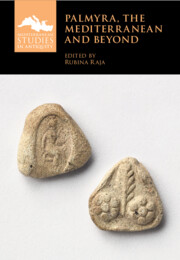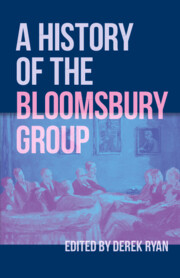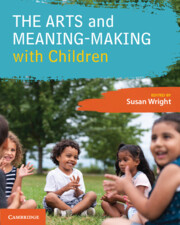Refine search
Actions for selected content:
387 results
Chapter 17 - Pheidias
- from Part III - Individuals
-
-
- Book:
- Personal Religion in the Ancient Greek World
- Published online:
- 25 November 2025
- Print publication:
- 11 December 2025, pp 387-405
-
- Chapter
- Export citation
The Semiotics of Aura: Copying Religious Images in Coptic Households
-
- Journal:
- Signs and Society ,
- Published online by Cambridge University Press:
- 13 November 2025, pp. 1-19
-
- Article
-
- You have access
- Open access
- HTML
- Export citation

Aesthetic Knowledge
-
- Published online:
- 11 November 2025
- Print publication:
- 04 December 2025
-
- Element
-
- You have access
- HTML
- Export citation

Cultural Property
- Law, Policy, and Markets
-
- Published online:
- 05 November 2025
- Print publication:
- 30 October 2025
6 - Performing Law
- from Part III - Public Tribunals of Judgment
-
- Book:
- Moral Autopsy
- Published online:
- 18 November 2025
- Print publication:
- 30 October 2025, pp 216-237
-
- Chapter
- Export citation
Chapter 4 - Bloomsbury and the New Biography
- from Part I - Aesthetic Bloomsbury
-
-
- Book:
- A History of the Bloomsbury Group
- Published online:
- 09 October 2025
- Print publication:
- 23 October 2025, pp 52-67
-
- Chapter
- Export citation
Chapter 10 - Bloomsbury and the USA
- from Part II - Global Bloomsbury
-
-
- Book:
- A History of the Bloomsbury Group
- Published online:
- 09 October 2025
- Print publication:
- 23 October 2025, pp 155-170
-
- Chapter
- Export citation

Palmyra, the Mediterranean and Beyond
-
- Published online:
- 21 October 2025
- Print publication:
- 16 October 2025
11 - We Are More Than One, When We Speak Together: Collective Art, Plural Possibilities, and the Horizon of Utopia
-
- Book:
- Tied Up in Tehran
- Published online:
- 28 September 2025
- Print publication:
- 16 October 2025, pp 294-316
-
- Chapter
- Export citation
Chapter 8 - Cognizing Regulative Ideas
- from Part II - A Kantian Account of Thought Experiment
-
- Book:
- Kierkegaard and the Structure of Imagination
- Published online:
- 26 September 2025
- Print publication:
- 16 October 2025, pp 119-137
-
- Chapter
- Export citation

A History of the Bloomsbury Group
-
- Published online:
- 09 October 2025
- Print publication:
- 23 October 2025
Expanding the corpus of the earliest Scythian animal-style artefacts
-
- Journal:
- Antiquity , First View
- Published online by Cambridge University Press:
- 03 October 2025, pp. 1-17
-
- Article
-
- You have access
- Open access
- HTML
- Export citation

The Arts and Meaning-Making with Children
-
- Published online:
- 11 September 2025
- Print publication:
- 25 September 2025
-
- Textbook
- Export citation
9 - Memetic Form and Memetic Meaning
-
- Book:
- The Language of Memes
- Published online:
- 12 September 2025
- Print publication:
- 11 September 2025, pp 151-170
-
- Chapter
- Export citation

AI and Image
- Critical Perspectives on the Application of Technology on Art and Cultural Heritage
-
- Published online:
- 10 September 2025
- Print publication:
- 09 October 2025
-
- Element
-
- You have access
- Open access
- HTML
- Export citation
Flow as Method: Artistic Restorying with the Sea
- Part of
-
- Journal:
- Public Humanities / Volume 1 / 2025
- Published online by Cambridge University Press:
- 08 September 2025, e130
-
- Article
-
- You have access
- Open access
- HTML
- Export citation
Chapter 5 - Visual Art from the Near East to Greece
-
- Book:
- Aggregation and Antithesis in Ancient Greece
- Published online:
- 21 October 2025
- Print publication:
- 28 August 2025, pp 114-163
-
- Chapter
- Export citation
5 - Pioneers, Postmodernisms and Aesthetic Experience
- from Part II - Approaches to Rap
-
-
- Book:
- The Cambridge Companion to Global Rap
- Published online:
- 25 July 2025
- Print publication:
- 14 August 2025, pp 88-99
-
- Chapter
- Export citation
4 - Craft, Creativity, and Distinction
-
- Book:
- The Language Work of Speechwriters
- Published online:
- 31 October 2025
- Print publication:
- 14 August 2025, pp 108-133
-
- Chapter
- Export citation
Towards an anti-colonial aesthetic politics: Surrealist praxis and epistemic refusal
-
- Journal:
- Review of International Studies , First View
- Published online by Cambridge University Press:
- 13 August 2025, pp. 1-22
-
- Article
-
- You have access
- Open access
- HTML
- Export citation
